#Facility Management
Explore tagged Tumblr posts
Text

Epoxy floors are highly durable and resistant to chemicals, impact, and abrasions, making them ideal for industrial and commercial settings where battery charging is a common practice.
#epoxyfloor#industrialfloor#epoxyflooring#chemicalresistantfloor#commercialfloor#commercialflooring#epoxy floor#epoxy flooring#commercial flooring#epoxy floor contractor nj#epoxy floor installations#facility management#warehouse floor
3 notes
·
View notes
Text
BIM Modeling for Facility Management of a Residential Tower
For clients based in the Netherlands, our expert team successfully delivered digital twins for facility management for a residential tower. The aim was to turn an aging tower into a smart building with streamlined facilities and operations. 🏘️
Our experts overcome the primary challenges of converting hand-drafted PDF into an accurate digital model and transforming the residential tower into a smart building. The successful conversion of hand-drafted PDF into detailed model and offering innovative solutions for clients. 🏗️
💡 Upscale your construction project with precision and quality.
🌐 Explore more details
#BIM Modeling Services#3D BIM Modeling#Revit BIM Services#3D Revit Modeling#3D Modeling Services#Architectural 3D Modeling#Architectural BIM Services#Digital Twin#Facility Management#Residential Tower#Digital Model#Hand-drafted PDF Conversion#BIM Technology
3 notes
·
View notes
Text
"AC Maintenance Tips for Homes and Businesses in Saudi Arabia’s Harsh Climate"
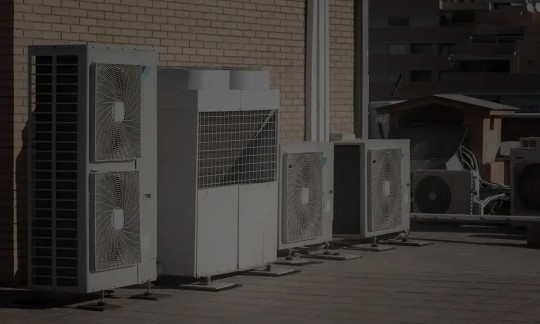
Air conditioning systems are vital for both homes and businesses in Saudi Arabia, where temperatures often soar to extreme levels. Ensuring that your AC unit functions at its best is essential not only for comfort but also for maintaining efficiency and reducing energy costs. Proper maintenance can prevent unexpected breakdowns during the hottest months, while also prolonging the lifespan of your system.
To maintain an efficient and reliable cooling system, many property owners opt for professional AC maintenance services to ensure their air conditioning units stay in top condition. Regular maintenance services can help identify potential issues before they escalate, avoiding costly repairs or the need for a full replacement.
1. Regular Filter Cleaning and Replacement
One of the simplest yet most effective maintenance tasks for any air conditioning system is regular filter cleaning or replacement. In Saudi Arabia’s dusty environment, filters can quickly become clogged with dust and debris, making the system work harder and reducing efficiency. Dirty filters restrict airflow, which not only increases energy usage but also decreases the unit's ability to cool properly. For both homes and businesses, it is recommended to clean or replace filters every one to three months, depending on the frequency of use.
2. Inspect and Clean Condenser Coils
The outdoor unit of your air conditioning system contains condenser coils that are responsible for releasing the heat absorbed from the indoor air. These coils are exposed to the elements, and in a harsh climate like Saudi Arabia, dust, dirt, and debris can easily accumulate. When the coils are dirty, the system's ability to dissipate heat is compromised, leading to reduced cooling performance and higher energy consumption. Regular cleaning of the condenser coils helps ensure optimal performance and efficiency.
3. Check Refrigerant Levels
For your AC system to cool effectively, it needs the correct amount of refrigerant. Low refrigerant levels can lead to inadequate cooling, causing the system to run longer and work harder. Over time, this can increase wear and tear on the unit and even lead to system failure. It’s important to have a professional check refrigerant levels during routine maintenance and top off as necessary to keep your system running smoothly.
4. Inspect Ductwork for Leaks
Leaky ductwork can significantly affect the efficiency of your air conditioning system, as cool air escapes before it reaches its intended destination. For businesses and larger properties, this can result in uneven cooling, higher energy bills, and an overworked AC unit. Regularly inspecting ductwork for leaks or gaps and sealing them as needed will help ensure that your air conditioning system is delivering cooled air efficiently.
5. Schedule Professional Maintenance
In Saudi Arabia’s extreme climate, scheduling professional AC maintenance at least twice a year is highly recommended. Professional technicians have the knowledge and tools to thoroughly inspect your system, clean essential components, and identify potential problems before they escalate. Businesses, in particular, can benefit from having a comprehensive maintenance plan to avoid costly downtime due to AC failure.
Whether you own a small home or manage a large commercial facility, regular AC rental service and maintenance are crucial for ensuring the longevity and efficiency of your cooling systems.
6. Optimize Thermostat Settings
Maintaining an optimal temperature setting on your thermostat can greatly impact energy usage and overall system performance. In Saudi Arabia, where temperatures can reach extreme highs, setting your thermostat just a few degrees higher can significantly reduce the strain on your AC unit. Additionally, programmable thermostats allow you to set different temperatures based on your schedule, which can help save energy when cooling is not needed.
7. Keep the Area Around the Outdoor Unit Clear
The outdoor unit of your air conditioner needs adequate airflow to function properly. Debris such as leaves, dirt, and plants can obstruct the airflow, causing the unit to work harder and reducing its efficiency. Regularly check and clear any debris from around the outdoor unit, and make sure that there is at least two feet of clearance on all sides to promote optimal airflow.
8. Ensure Proper Ventilation
Ventilation plays a crucial role in the effectiveness of your AC system, particularly in business settings where large numbers of people and equipment generate heat. Poor ventilation can increase humidity levels, making it harder for your air conditioner to cool the space. Make sure that vents and return air registers are not blocked by furniture or other obstructions, and consider using ceiling fans to help distribute cool air more evenly throughout the space.
Conclusion
Maintaining your air conditioning system is essential in Saudi Arabia’s harsh climate, where efficient cooling is a necessity rather than a luxury. By following these AC maintenance tips, you can ensure that your system operates efficiently, keeps energy costs under control, and provides reliable cooling when you need it most.
Investing in regular AC maintenance service is key to extending the life of your system and avoiding the discomfort and expense of unexpected breakdowns. Whether for a home or business, proper maintenance is a proactive step toward achieving consistent and cost-effective cooling year-round.
#Commercial chiller maintenance#HVAC maintenance#Chiller efficiency#AC maintenance service#Chiller rental service#Cooling solutions Saudi Arabia#Energy-efficient cooling#Chiller system repair#Chiller optimization#Facility management#Preventive maintenance#Refrigerant monitoring#Compressor maintenance#Saudi Arabia HVAC services#Cooling equipment upkeep#HVAC Maintenance#Chiller Maintenance#Commercial Cooling Solutions#Energy Efficiency#Saudi Arabia Climate Control#Building Management Systems#Facility Management#AC Maintenance Services#Chiller Rental Services#Sustainable Cooling Solutions#Industrial Cooling Systems#Preventive Maintenance Tips
3 notes
·
View notes
Text
2 notes
·
View notes
Text
Cleaning Services Manila
We offer a wide range of janitorial services and cleaning services to commercial buildings, manufacturing facilities, logistics and manufacturing, and several other industries. We also deliver detailed recommendations to property maintenance.
At Shared Solutions, Inc., we believe that quality workers matter just as much as quality service does. That is why, as our company grows, we also want to make sure that we work with the right people suited to our clients’ specific business requirements.
Our professional team actively engages with applicants and together, we move towards creating significant impact both individually and collectively.

Address: Bachrach Building II, 23rd St. corner Antonio C. Delgado St., Port Area, Manila, 1018 Philippines
Phone: (02) 8527-7080 local 139
Email: [email protected]
Website: https://www.sharedsolutions.com.ph/
#Cleaning Services Manila#Professional Cleaning Services#Commercial Cleaning Services#Housekeeping Services#Janitorial Services#Facility Management#Laundry Services
4 notes
·
View notes
Text
Project on Gym Management Software by Xcrino
The Project on Gym Management Software by Xcrino aims to provide a comprehensive solution for gym owners and managers to effectively manage their fitness centers and improve member satisfaction. This cutting-edge software offers a wide range of features and tools that streamline operations, enhance the member experience, and drive revenue growth. By leveraging the power of the Yoactive Gym Management Software, gym owners and managers can effectively manage their fitness center, improve member satisfaction, and increase overall revenue and profitability.
#sales and marketing#financial management#facility management#staff training and development#group fitness and personal training#data and analytics#customer relationship management#social media and online presence#strategic partnerships and collaborations#branding and messaging#technology and innovation
2 notes
·
View notes
Text
#terotam#FMS#FMS system#FMS software#facility managementsoftwareindia#facility management software#facility management#facility
2 notes
·
View notes
Text
What Is Corporate Housekeeping and How Does It Impact Your Business Operations
Introduction
Corporate housekeeping is more than just cleaning the office; it’s about creating an efficient, safe, and welcoming environment for employees, clients, and visitors. As companies evolve, the need for professional corporate housekeeping services has grown exponentially. Whether it’s ensuring a clean workspace, managing waste, or maintaining an organized office, corporate housekeeping plays a vital role in the smooth operation of a business.
At Arise Facility Solutions, we recognize that an organized and clean office environment directly contributes to business productivity, employee satisfaction, and overall corporate success. In this blog post, we’ll explore what corporate housekeeping entails, how it impacts business operations, and why your company should consider partnering with a professional service provider.
Get a FREE consultation to reduce your Facility Cost
What Is Corporate Housekeeping?
Corporate housekeeping refers to the services that maintain the cleanliness, orderliness, and hygiene of office spaces, corporate buildings, or commercial facilities. These services go beyond basic cleaning tasks such as dusting, vacuuming, and trash removal. Corporate housekeeping is a comprehensive approach to ensuring that all aspects of the facility—both the visible and non-visible areas—are maintained to high standards.
Corporate housekeeping services typically include:
Regular Cleaning and Sanitization: Office spaces, meeting rooms, kitchens, restrooms, and common areas need to be regularly cleaned and sanitized to ensure a healthy and welcoming environment.
Waste Management: Proper disposal and recycling of waste products, including hazardous materials, are crucial for environmental sustainability.
Maintaining Office Supplies and Equipment: Housekeeping involves ensuring that all office equipment is cleaned, maintained, and organized for optimal use.
Safety and Compliance: Corporate housekeeping ensures that the workspace complies with safety standards, including fire safety, ergonomics, and hazard management.
Facility Maintenance: Beyond cleaning, corporate housekeeping can include small maintenance tasks, such as replacing light bulbs, repairing furniture, or organizing storage spaces.
By investing in corporate housekeeping services, businesses can focus on their core operations while maintaining an environment that fosters productivity and growth.
Why Corporate Housekeeping Is Essential for Your Business
Corporate housekeeping is often seen as a behind-the-scenes function, but its impact on business operations cannot be overstated. The role of corporate housekeeping extends beyond maintaining cleanliness; it influences several key aspects of business performance, including employee productivity, safety, client impressions, and even compliance with regulations.
1. Impact on Employee Productivity and Morale
A clean and organized workplace has been linked to higher employee satisfaction and increased productivity. When employees are working in a clutter-free environment, it becomes easier to focus on tasks and collaborate with colleagues. Additionally, a tidy office reduces distractions, making it easier to find the necessary resources and documents.
Corporate housekeeping contributes to the physical and mental wellbeing of employees. For example, regular cleaning and sanitization of shared spaces, such as restrooms and kitchens, can prevent the spread of germs and reduce sick days. Moreover, maintaining a clean workspace helps employees feel valued and contributes to a positive workplace culture.
2. Creating a Positive First Impression
Your office is often the first point of contact for potential clients, visitors, and business partners. A well-maintained office speaks volumes about your business and its professionalism. A clean and welcoming environment helps to make a positive first impression, giving the impression that your company is organized, reliable, and attentive to detail.
Corporate housekeeping ensures that your office is always presentable, regardless of who walks through the door. From sparkling floors to neat reception areas, every aspect of the office contributes to the perception of your brand.
3. Compliance with Health and Safety Standards
In today’s world, businesses must adhere to strict health and safety regulations, especially in light of the ongoing COVID-19 pandemic. Corporate housekeeping plays a crucial role in ensuring that offices meet health and safety standards. Regular sanitization and cleaning protocols help reduce the spread of illnesses, such as the flu or cold, and minimize the risk of cross-contamination between employees.
Maintaining a clean workspace also helps companies comply with safety regulations set forth by OSHA (Occupational Safety and Health Administration) or local regulatory bodies. For example, ensuring that exit routes are clear, that fire extinguishers are easily accessible, and that workplace hazards are promptly addressed are all part of corporate housekeeping.
4. Enhancing Sustainability Efforts
More and more businesses are striving to reduce their environmental footprint and improve sustainability. Corporate housekeeping services can contribute to these efforts by implementing eco-friendly cleaning practices. This may include using biodegradable or non-toxic cleaning products, reducing water and energy consumption, and promoting recycling and waste reduction.
A commitment to sustainability can also enhance your company’s reputation, particularly among environmentally conscious clients and employees. By incorporating green housekeeping practices, you demonstrate that your business is aligned with contemporary values of social responsibility.
5. Reducing Operational Costs

Corporate housekeeping also helps reduce hidden costs associated with maintaining a cluttered or unsanitary office. For example, a dirty environment can lead to increased absenteeism due to illness or lower employee morale, both of which can impact productivity and, ultimately, your bottom line.
7. Consistency and Professionalism
When you hire a professional corporate housekeeping service, you ensure that cleaning and maintenance tasks are performed consistently and to high standards. Professional housekeeping teams are trained to provide comprehensive and thorough cleaning services, ensuring that no area is overlooked. Whether it’s deep cleaning carpets or sanitizing high-touch surfaces, a professional team brings expertise and attention to detail to the task.
Consistency in housekeeping also contributes to creating a uniform standard of cleanliness throughout the office. Employees and clients can rely on the cleanliness of the office, making it easier to focus on their work and build trust with your brand.
Get a FREE consultation to reduce your Facility Cost
How to Implement Corporate Housekeeping in Your Business
Implementing corporate housekeeping services in your business requires careful planning and coordination. Here are some steps to consider when establishing a corporate housekeeping program:
1. Define Your Needs and Expectations
Every office is unique, and your housekeeping needs will depend on several factors, such as the size of your facility, the number of employees, and the types of tasks you require. Start by identifying the specific services you need, such as daily cleaning, waste management, restroom sanitation, or specialized deep cleaning.
https://arisefacilitysolutions.com/blog/wp-content/uploads/2025/03/21.png
2. Choose a Professional Housekeeping Provider
Partnering with a professional housekeeping provider like Arise Facility Solutions ensures that your office cleaning needs are met with expertise and attention to detail. Look for a reputable service provider with experience in corporate housekeeping, positive customer reviews, and a track record of delivering consistent results.
It’s important to choose a service provider that aligns with your company’s values, whether it’s sustainability, efficiency, or customer service. Additionally, consider whether the provider offers customizable packages or can tailor their services to fit your business needs.
3. Create a Cleaning Schedule
Once you have chosen a service provider, work with them to develop a cleaning schedule that fits your business hours and operations. Depending on the nature of your business, you may require daily, weekly, or monthly cleaning services. Be sure to account for peak times when the office is busier and adjust the schedule accordingly.
4. Set a Budget
Corporate housekeeping services are an investment, so it’s essential to establish a budget that aligns with your company’s needs and resources. While you don’t want to compromise on quality, there are various pricing options available depending on the level of service and the frequency of cleaning.
Work with your service provider to find a balance between cost and quality to ensure you get the best value for your investment.
5. Monitor and Evaluate Performance
Once corporate housekeeping services are in place, it’s important to monitor the effectiveness and evaluate the performance of the cleaning team regularly. Provide feedback to your service provider to ensure that they are meeting your expectations and addressing any concerns.
Get a FREE consultation to reduce your Facility Cost
FAQs About Corporate Housekeeping
1. What is the difference between corporate housekeeping and residential housekeeping?
Ans. Corporate housekeeping focuses on cleaning and maintaining commercial office spaces and facilities, while residential housekeeping involves cleaning homes and apartments. Corporate housekeeping includes tasks like waste management, ensuring safety standards, and handling office-specific cleaning needs.
2. How often should corporate housekeeping be scheduled?
Ans. The frequency of corporate housekeeping depends on the size of your office and the number of employees. Larger offices with high foot traffic may require daily cleaning, while smaller offices may only need cleaning once or twice a week.
3. Can corporate housekeeping improve employee productivity?
Ans. Yes, a clean and organized workspace can improve employee productivity by reducing distractions and promoting a healthier, more comfortable work environment.
4. Is it necessary to hire a professional corporate housekeeping service?
Ans. While some businesses may choose to handle housekeeping in-house, hiring a professional service ensures consistent, high-quality cleaning. Professional cleaners bring expertise, experience, and efficiency to the job, which can save your business time and money in the long run.
5. What are the benefits of green corporate housekeeping services?
Ans. Green corporate housekeeping services use environmentally friendly cleaning products and methods that minimize the environmental impact. This can enhance your company’s sustainability efforts and improve indoor air quality for your employees.
6. How do I choose the right corporate housekeeping service?
Ans. When choosing a corporate housekeeping service, consider factors such as experience, reputation, eco-friendliness, and the range of services offered. Be sure to review customer feedback and request a customized service plan that aligns with your business needs.
Get a FREE consultation to reduce your Facility Cost
Conclusion
Corporate housekeeping is an essential element of business operations that affects productivity, employee wellbeing, safety, and the company’s overall image. By investing in professional housekeeping services, your business can benefit from improved cleanliness, efficiency, and a positive workplace environment. At Arise Facility Solutions, we specialize in providing tailored corporate housekeeping solutions that meet the unique needs of your business, ensuring that your office space remains organized, hygienic, and welcoming.
By implementing a professional corporate housekeeping program, you not only enhance the functionality of your workplace but also contribute to a healthier and more productive environment for your employees and clients.
#commercial cleaning#facility management#corporate housekeeping services#industrial cleaning services#cleaning services#mumbai#navi mumbai#pune
0 notes
Text
Comprehensive Facility Management Software Solutions

trAIlique.ai offers advanced facility management software services designed to streamline operations, enhance efficiency, and improve asset management. Our solutions include maintenance tracking, real-time monitoring, automated workflows, and data-driven insights to help businesses optimize their facility operations seamlessly.
0 notes
Text
Easy Clean Facility Services
#Commercial cleaning services#Office Cleaning#Janitorial services#Integrated Facility Services#Deep cleaning services#Facility Management#Housekeeping Services#Manpower Supply#Pantry Management services#Payroll outsourcing services
1 note
·
View note
Text

Epoxy flooring is ideal for freezer and refrigerator areas, offering durability in low temperatures without cracking. Its seamless surface resists moisture and bacteria, ensuring a hygienic environment for food storage.
#epoxy floor#epoxy flooring#commercial flooring#epoxy floor contractor nj#epoxy floor installations#facility management#epoxyflooring#commercial kitchen floor#restaurant kitchen floor#freezerfloor#commercial freezer
3 notes
·
View notes
Text

Raysen Technologies Your Trusted Partner in Facilities Management
Raysen Technologies Pte Ltd is your trusted partner in comprehensive facilities management. We provide end-to-end solutions, ensuring seamless operations, efficiency, and sustainability for your business. From maintenance to security, cleaning to energy management, our expert team delivers tailored services to meet your needs. With a commitment to excellence and innovation, we help you create safe, functional, and efficient spaces. Partner with us for smarter facility management!
Visit Our Website: https://raysentechs.com/our-projects-reference/
#Facility management solutions#Commercial facility management services#facility management#Commercial facility management#facility management services
1 note
·
View note
Text
Boost Your Career with A-1 Institute of Facility Management
Introduction
In today's fast-paced and competitive job market, having the right skills can make all the difference in securing a successful career. At All Services Global, we believe in empowering individuals with industry-leading, job-oriented training in Facility Management—one of the fastest-growing sectors in India. Whether you're an aspiring professional looking to upskill or a fresh talent ready to kickstart a new career, our A-1 Institute of Facility Management is the perfect place to gain hands-on experience and industry-recognized expertise.

Why Choose A-1 Institute of Facility Management?
At All Services Global, we don’t just provide training; we shape future leaders in Facility Management. Our programs are designed to equip candidates with practical knowledge, technical skills, and professional expertise to thrive in this dynamic industry.
Key Benefits of Training with Us:
Expert-Led Training – Learn from industry professionals with years of experience.
Hands-On Practical Learning – Gain real-world exposure with industry-standard equipment.
Diverse Career Pathways – Explore opportunities in corporate offices, healthcare, hospitality, industrial facilities, and more.
Government-Affiliated Programs – We proudly offer specialized training for BPL youths under the SGSY program by the Ministry of Rural Development, helping underprivileged individuals build a secure future.
Why Facility Management is a Smart Career Choice
Facility Management is an essential sector that ensures workplaces operate smoothly, safely, and efficiently. With growing urbanization and increasing demand for professional facility services, the industry offers high-paying job opportunities across multiple sectors, including:
Corporate Offices
Healthcare & Hospitals
Hospitality & Hotels
Manufacturing & Industrial Facilities
Educational Institutions
Whether it’s industrial laundry services, building maintenance, hospitality management, or corporate support, Facility Management is a future-proof career path with endless growth opportunities.
Secure Your Future with A-1 Institute of Facility Management
Don’t miss out on the opportunity to enhance your career growth and professional development. With our comprehensive training, you’ll gain in-demand skills, increase your employability, and become a top choice for recruiters in the industry.
📞 Call us today: +91 22 4063 7777 🌐 Visit our website: allservicesglobal.com
Conclusion
In an era where professional expertise and practical skills define career success, A-1 Institute of Facility Management stands as a leading training provider in India. With our industry-recognized training, hands-on learning approach, and government-supported programs, we are committed to transforming lives and building the workforce of tomorrow. Take the first step towards a rewarding career—enroll today!
To stay updated with the latest posts, follow us on social media:
📸 Instagram - https://www.instagram.com/allservicesglobal/?hl=en
📘 Facebook - https://www.facebook.com/osd70
🐦 Twitter (X) - https://x.com/services10077
🔗 Linkedin - https://www.linkedin.com/company/104738983/admin/dashboard/
📌 Pinterest - https://in.pinterest.com/allservicesglobal3/_created/
🧵 Thread - https://www.threads.net/@allservicesglobal
🥁 Tumblr - https://www.tumblr.com/dashboard/stuff_for_you
❗ Reddit - https://www.reddit.com/user/allservicesglobal/
Contact: ALL SERVICES GLOBAL +91-22 4063 7777 / +91- 22 4063 7788 https://allservicesglobal.com/
Digital Partner:
TVM INFO SOLUTIONS PVT LTD
Contact: TVM Info Solutions Pvt. Ltd.
+91- 90045 90039
Follow us on Social Media
🌐 Website - https://tvminfo.com/
📸 Instagram - https://www.instagram.com/tvm_infosolution/
📘 Facebook - https://www.facebook.com/people/Tvm-Info-Solutions-Pvt-Ltd/61555896761755/
🔗 Linkedin - https://in.linkedin.com/company/tvminfo
▶️ Youtube - https://www.youtube.com/@tvminfosolutions
#Facility Management#Workforce Training#Career Growth#Professional Development#Job Opportunities#Skill Enhancement#Leadership Development#Industrial Laundry#Hygiene Excellence#Corporate Success#Smart Laundry Solutions#Upskilling#Future-Ready#Industry Experts.
0 notes
Text
🔧✨ New Case Study Alert! ✨🏫
Tejjy Inc. successfully delivered 3D Modeling, MEP Coordination, and Shop Drawings for Brunswick School, Connecticut in collaboration with A&B Mechanical. 🚀
✅ BIM-driven MEP coordination ✅ Clash-free 3D mechanical & plumbing models ✅ Fabrication-ready shop drawings ✅ Streamlined installation & reduced rework
Discover how our expertise in BIM solutions ensured seamless construction for this educational facility.
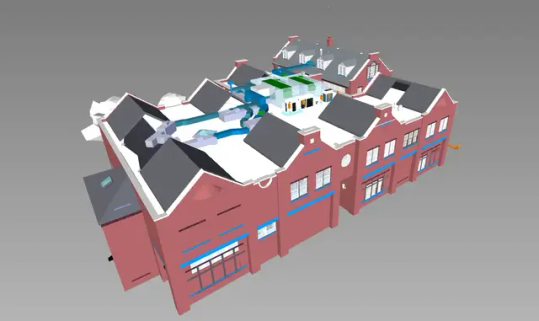
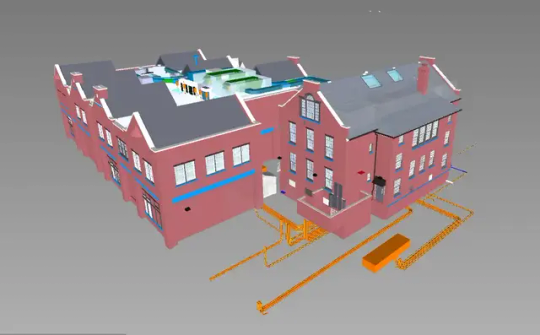
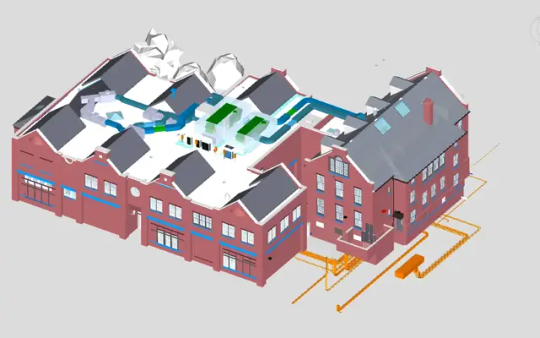
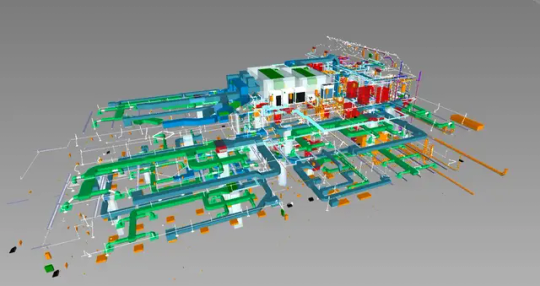

👉 Read the full case study here: https://www.tejjy.com/project/3d-modeling-mep-coordination-for-brunswick-school-ct/
#building design#construction#architecture#3d modeling#shop drawings#bim#building information modeling#coordination#facility management
0 notes
Text
Herausforderungen an den Facility Manager in internationalen Projekten nehmen zu!
Durch eine zunehmende Internationalisierung der globalen Wirtschaft steigen auch die Anforderungen an den Facility Manager, Projekte über Landesgrenzen hinaus erfolgreich zu leiten bzw. durchzuführen!
So sind neben hinreichenden sprachlichen Kenntnisse auch interkulturelle Kompetenzen immer wichtiger! Beispielsweise ist in einem Projekt zur Erstellung von Wartungs- und Prüfplänen für die Haus- und Gebäudetechnik in einem europäischen Portfolio neben den vorgenannten Fähigkeiten auch fundiertes Know-How aus dem (regional) jeweils anzuwendenden Regelwerk gefragt!
Erfahrungsgemäß bedarf es hier u.U. reichlicher Diskussionen dem Management zu erklären, wieso in Deutschland eine Personenaufzugsanlage alle 12 Monate durch einen Sachverständigen zu prüfen ist, in den Niederlanden alle 18 Monate und in Frankreich alle 36 Monate (!). Unbenommen hiervon sind die übergreifend anzuwendenden Anforderungen aus der DIN-EN 81–20/50 sowie die sich jeweils lokal ergebenden Vorgaben aus z.B. der Baugenehmigung sowie dem Arbeitsschutz.
Das die vorgenannte Heterogenität multinationale Ausschreibungen kostspieliger sowie komplexer werden lässt und ein Benchmarking über die jeweiligen Standorte hinweg erschwert ist dabei nur eine Konsequenz. Weitergehend sind da schon haftungsrechtlichen Konsequenzen für die Führungsverantwortlichen, welche durch den Facility Manager mittels fachlicher Kenntnisse auch anhand der jeweils vorherrschenden betrieblichen Kultur entsprechend zu kommunizieren sind.
Der-Facility-Manager Peter Schmidt bietet hier mit mehr als 20 Jahre internationaler Erfahrung aus zahlreichen Projekte gerne auch für Ihre entsprechenden Pläne Unterstützung an! Nehmen Sie Kontakt auf: [email protected]
2 notes
·
View notes